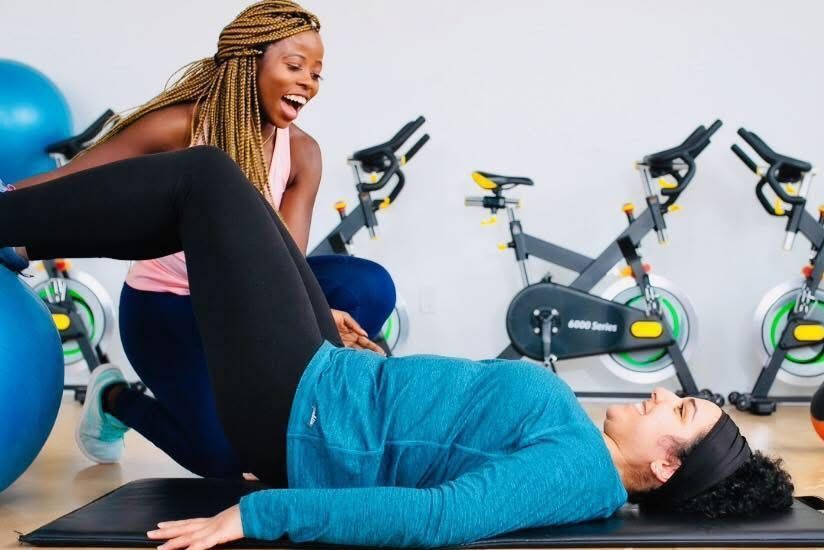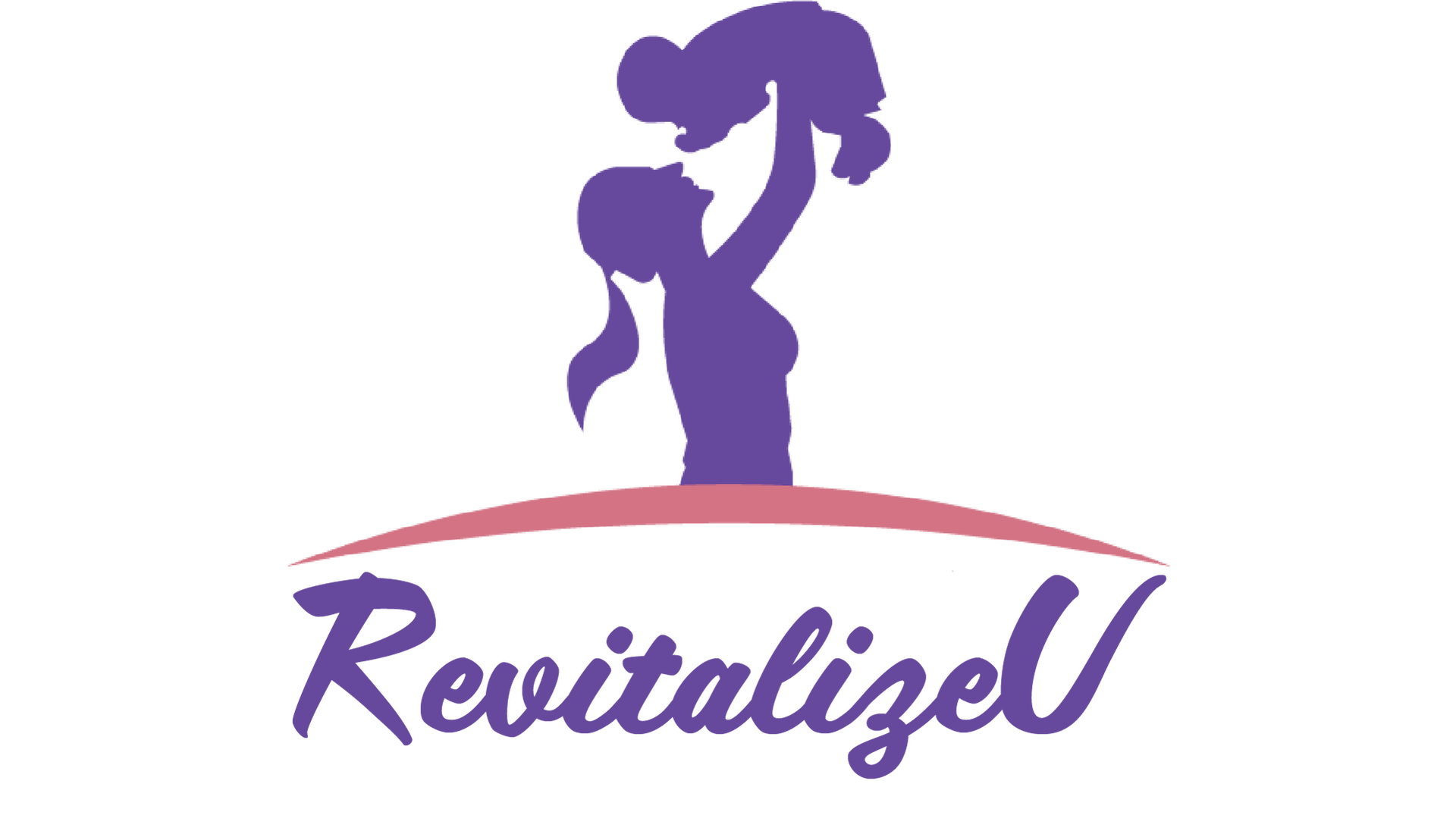10 Diastasis Recti Exercises for Postpartum Ab Separation

Discover the Best Diastasis Recti Exercises to Heal Postpartum Ab Separation. Strengthen Your Abdominal Muscles and Regain Confidence with These Effective Workouts!
If you've recently had a baby, you've likely heard the term diastasis recti or abdominal separation. This common condition affects many postpartum women, and it can cause not only a physical gap in your abdominal muscles but also discomfort and a lack of confidence in your body. The good news is that with the right exercises, you can heal your core, restore strength, and regain your confidence!
At RevitalizeU, we specialize in helping women rebuild their bodies after childbirth. In this blog, we will dive deep into diastasis recti, explore the best exercises to heal it, and guide you through everything you need to know to get started on your recovery journey.
What Are the Physical Implications of Diastasis Recti?
Diastasis recti occurs when the left and right sides of the rectus abdominis (the “six-pack” muscles) separate during pregnancy, often due to the expanding uterus. This condition leaves a gap in the center of the abdominal wall, and while it's common, it can lead to weakness in the core and pelvic floor.
Some physical symptoms include:
- A visible bulge or gap in the middle of your abdomen.
-Lower back pain.
-Weakness or instability in the core.
-Difficulty with daily movements such as lifting, bending, or carrying your baby.
How Can Diastasis Recti Affect Daily Activities?
When you experience diastasis recti, simple tasks like picking up your baby, getting in and out of bed, or even walking can become challenging. Without proper support and strength in your core, you may also experience poor posture and discomfort while engaging in activities like running or exercising. That’s why it’s so important to address the issue early on with targeted exercises to strengthen your core and restore function.
For more guidance on how to get started, check out our Postnatal Fitness Programs designed to support postpartum moms in rebuilding strength.
Why Should You Start Exercising Postpartum?
Exercising postpartum is not only about looking good but also about feeling strong, healthy, and empowered. Your core, pelvic floor, and overall strength have all undergone significant changes during pregnancy, and restoring them through safe and effective exercises is key to getting back to feeling like yourself.
Exercising will help :
- Improve posture and balance.
- Relieve stress and increase energy.
- Promote mental well-being and boost confidence.
- Restore function to your core and pelvic floor.
If you're ready to start your postpartum fitness journey, join us for our specialized postnatal fitness program.
When is the Right Time to Start Exercising?
The right time to start postpartum exercise varies for each woman. It's essential to listen to your body and consult with your healthcare provider before beginning any fitness routine.
Generally, you can start with gentle exercises, such as pelvic floor exercises and breathing exercises, within a few days after childbirth (depending on your recovery). More intense core exercises, like the ones listed below, should be introduced only after you have healed sufficiently.
If you're unsure, book a time with us and we can guide you with the right steps in our online postnatal fitness classes.
How Soon After Birth Can You Begin Exercising?
After a vaginal birth, many women are cleared to begin light exercise around 6 weeks postpartum. After a C-section, the recovery timeline may be longer, so always consult your doctor first. That said, you can start performing gentle pelvic floor exercises or breathing exercises even before your 6-week checkup. These help prepare your body for more intense core exercises as you heal.
What Signs Indicate You Should Wait Before Starting Exercises?
It's crucial to wait and avoid exercising if:
-You experience severe pain or discomfort.
-You have not been cleared by your healthcare provider.
-You experience excessive bleeding, dizziness, or shortness of breath during movement.
-You have symptoms of pelvic organ prolapse or urinary incontinence.
-Take your time to heal, and always listen to your body!
How Do You Know If You're Ready for Core Exercises?
You may be ready to start core exercises if:
-You can engage your pelvic floor and abdominal muscles.
-You’re no longer experiencing significant back pain or pelvic discomfort.
-You have been cleared by your doctor for exercise.
In our postnatal programs, we walk you through each phase of recovery and help you progress safely.
10 Effective Exercises for Diastasis Recti
Here are ten exercises that can help heal your diastasis recti and restore strength to your abdominal muscles. These exercises should be performed with proper form and without causing pain.
1. Heel Slide
How to Perform It:
- Lie on your back with your knees bent and feet flat on the floor.
- Engage your pelvic floor and abdominal muscles.
- Slowly slide one leg out while keeping the lower back pressed into the floor.
- Bring your leg back to the starting position and repeat with the other leg.
Benefit:
This exercise helps activate your core muscles and improves the connection between your abs and pelvic floor.
2. Pelvic Tilt
How to Perform It:
- Lie on your back with knees bent and feet flat on the floor.
- Slowly tilt your pelvis toward your chest, engaging your core as you flatten your lower back against the floor.
- Hold for a few seconds, then relax.
Benefit:
Strengthens your lower abs and helps improve your posture.
3. Breathing Exercise
How to Perform It:
- Sit or lie down comfortably and place your hands on your lower abdomen.
- Inhale deeply, allowing your abdomen to expand.
- Exhale fully, drawing your belly button toward your spine.
Benefit:
This exercise is crucial for rebuilding the deep core muscles and reactivating the diaphragm.
4. Seated Leg Lift
How to Perform It:
- Sit on a chair with your feet flat on the ground.
- Slowly lift one leg at a time, keeping your knee straight and engaging your core.
- Lower your leg back down and repeat.
Benefit:
Strengthens your lower abs and engages your pelvic floor.
5. Bridge Exercise
How to Perform It:
-Lie on your back with knees bent and feet flat on the floor.
-Engage your core and lift your hips towards the ceiling, squeezing your glutes.
-Lower your hips back down and repeat.
Benefit:
The bridge helps engage the core, glutes, and pelvic floor muscles, offering overall core strengthening.
6. Modified Plank
How to Perform It:
- Start in a tabletop position with your hands under your shoulders and knees under your hips.
- Engage your core and lift one leg off the floor, then the other.
- Hold the position for 10-20 seconds.
Benefit:
The modified plank strengthens the core and helps improve stability.
7. Side-Lying Leg Lift
How to Perform It:
- Lie on your side with your legs extended and your bottom arm supporting your head.
- Lift your top leg toward the ceiling, keeping your core engaged.
- Lower your leg back down and repeat.
Benefit:
This exercise targets your outer thigh muscles and helps activate the core.
8. Cat-Cow Stretch
How to Perform It:
- Start on your hands and knees.
- Inhale as you arch your back (cow pose), then exhale and round your spine (cat pose).
- Repeat for 10-15 reps.
Benefit:
This exercise mobilizes your spine and activates your abdominal muscles.
9. Wall Sit
How to Perform It:
- Stand with your back against a wall.
- Slide down the wall until your knees are at a 90-degree angle, keeping your core engaged.
- Hold for 10-30 seconds.
Benefit:
Strengthens the core and lower body while promoting pelvic stability.
10. Bird-Dog Exercise
How to Perform It:
- Start on your hands and knees.
- Extend your right arm and left leg while keeping your core engaged.
- Hold for a few seconds and return to the starting position.
- Repeat with the opposite arm and leg.
Benefit:
Improves balance and strengthens the core and lower back.
Tips for Success and Safety While Exercising
Start slow: Don’t rush the process. Begin with gentle movements and progress gradually.
Engage your core: Focus on engaging your deep core muscles throughout each exercise.
Modify as needed: If an exercise feels too challenging, modify it to suit your fitness level.
Listen to your body: Always stop if you feel pain or discomfort.
Conclusion: Moving Forward with Confidence
Healing from diastasis recti is a journey, but with the right exercises and patience, you can restore strength to your core and regain your confidence. Track your progress and continue to focus on consistency, and soon you’ll be able to engage in everyday activities without discomfort.
For continued support and personalized coaching book a consultation and join our postnatal fitness programs designed specifically to help moms like you heal and regain strength.
Patience is key—your body has been through a lot, but with the right guidance and commitment, you can come out stronger than ever!



